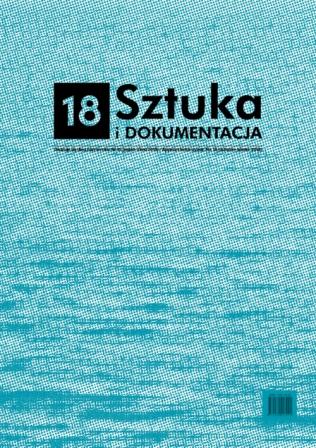Muzeum Sztuki Nowoczesnej Według Założeń Mariana Bogusza
Premises for a Museum of Modern Art by Marian Bogusz
Author(s): Janusz ZagrodzkiSubject(s): Visual Arts, Sociology of Art
Published by: Akademia Sztuk Pięknych w Gdańsku
Keywords: Marian Bogusz; Collection of The Krzywe Koło Gallery; Marian Bogusz stage design; Museum of Modern Art in Koszalin
Summary/Abstract: The article describes a notable creative initiative by Marian Bogusz (1920-1980) for the establishment of a Museum of Modern Art modelled upon the International Collection unveiled in 1931 by Władysław Strzemiński and the a.r. group, entrusted as a deposit to the Museum in Łódź. Bogusz embarked on this project promptly upon his release from the concentration camp in Mauthausen (1945) and also the establishment of the Young Artists and Scientists Club in Warsaw (1947). The imposition of socialist realism in Poland soon there after significantly impeded the collection of modern art, and it was only upon the creation of Klub Krzywe Koło (The Crooked Circle Club) and of Bogusz’s autonomous Gallery (1956) that his ideas could be revisited. Bogusz was seeking to assemble a collection of works by artists affiliated with the international Phases movement and by others whose pieces were exhibited at the Krzywe Koło Gallery, incorporating them into the foundation of a permanent collection. He initially broached the subject with the Art Museum in Łódź. A body of 13 paintings by artists active in Paris was eventually assembled and passed on to the Łódź institution, but the latter did not agree to the concept of establishing a separate Museum of Modern Art. The next body of works, Collection I of the Krzywe Koło Gallery (35 paintings from 1957-1961), was bequeathed to the National Museum in Warsaw (1963), but likewise was not exhibited. In the 1960s, Bogusz based himself in Koszalin. The first exhibitions of modern art were held at the Baltic Drama Theatre and, subsequently, at the Museum in Koszalin. Ever hoping to establish an independent Museum of Modern Art, Bogusz bequeathed to the Museum in Koszalin (1963) the Collections II and III (comprising, respectively, 13 paintings and 29 assorted gouaches, drawings and prints). Beginning in 1963, the annual Meetings of Artists and Scientists were held in Osieki near Koszalin; the accomplished artists invited to these events were required to, as it were, remit a participation fee in kind by gifting one of their pieces to the museum. In 1965, further work on Bogusz’s project was thwarted; the art department at the Museum in Koszalin was closed by way of an administrative decision, the net effect being that the nascent Museum of Modern Art launched in 1963 physically ceased to exist. The concept of a new museum formulated by Bogusz, one in which painting and sculpture would be paired with poetry, theatre, and music, is worthy of note. Global artistic achievements of the early 1960s, with a significant contribution by Polish artists are yet to be duly presented in actual museum spaces and may be enjoyed only virtually, if at all. The dispersed collections of the Museum of Modern Art, as built up in fits and starts in accordance with the ideas of Bogusz, are still waiting for a home and for an appreciating audience.
Journal: Sztuka i Dokumentacja
- Issue Year: 2018
- Issue No: 18
- Page Range: 15-27
- Page Count: 13
- Language: Polish

